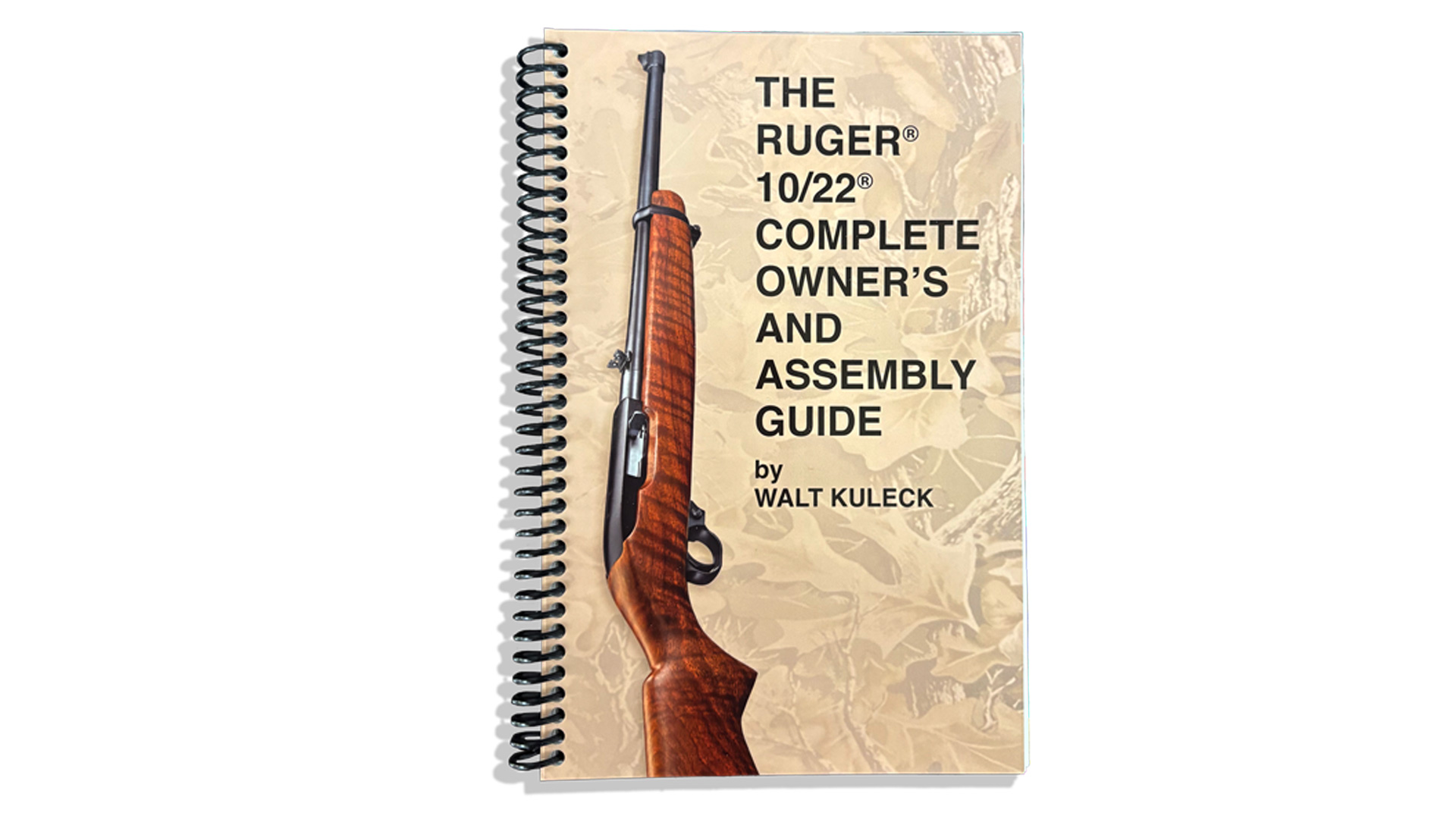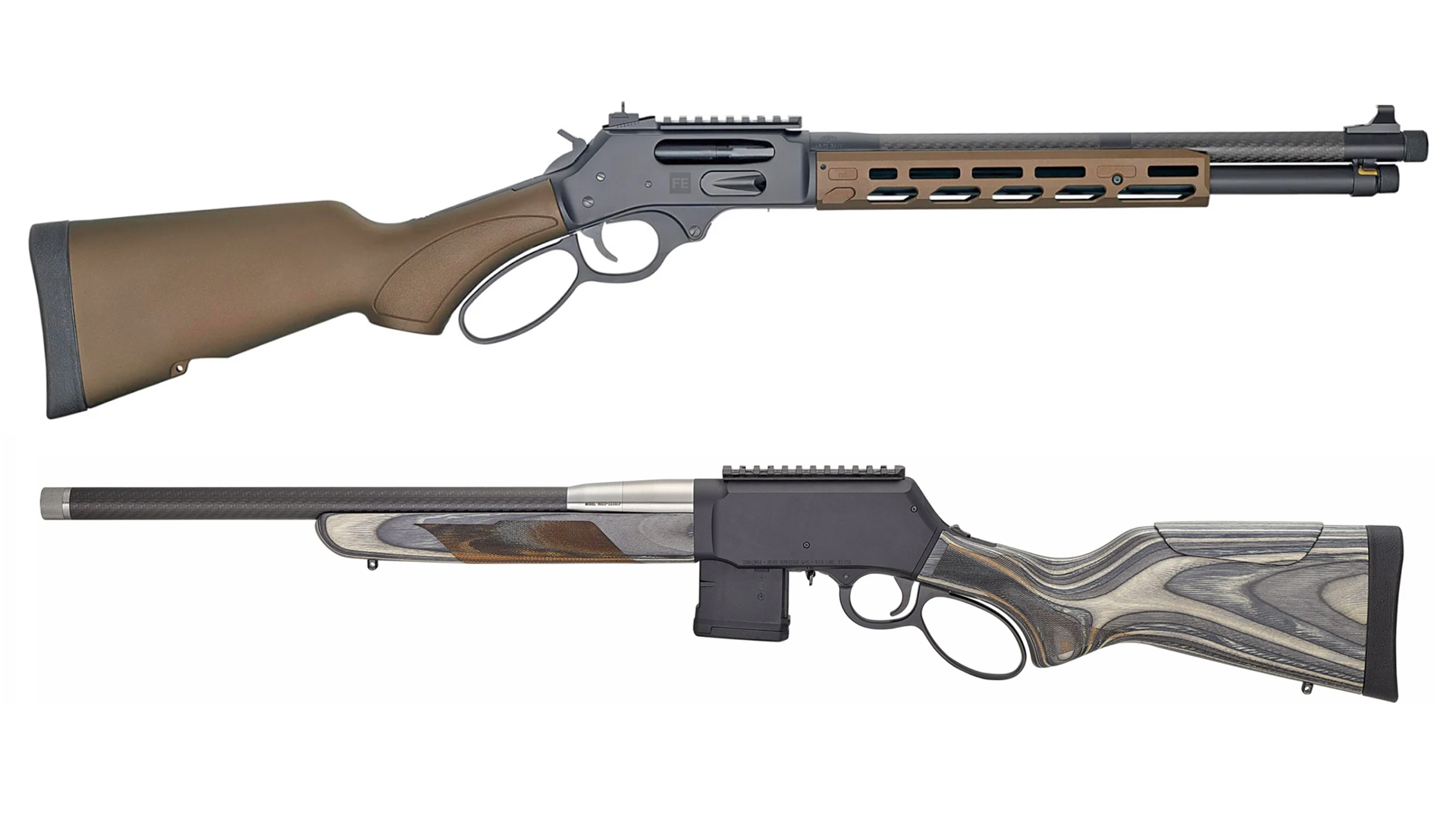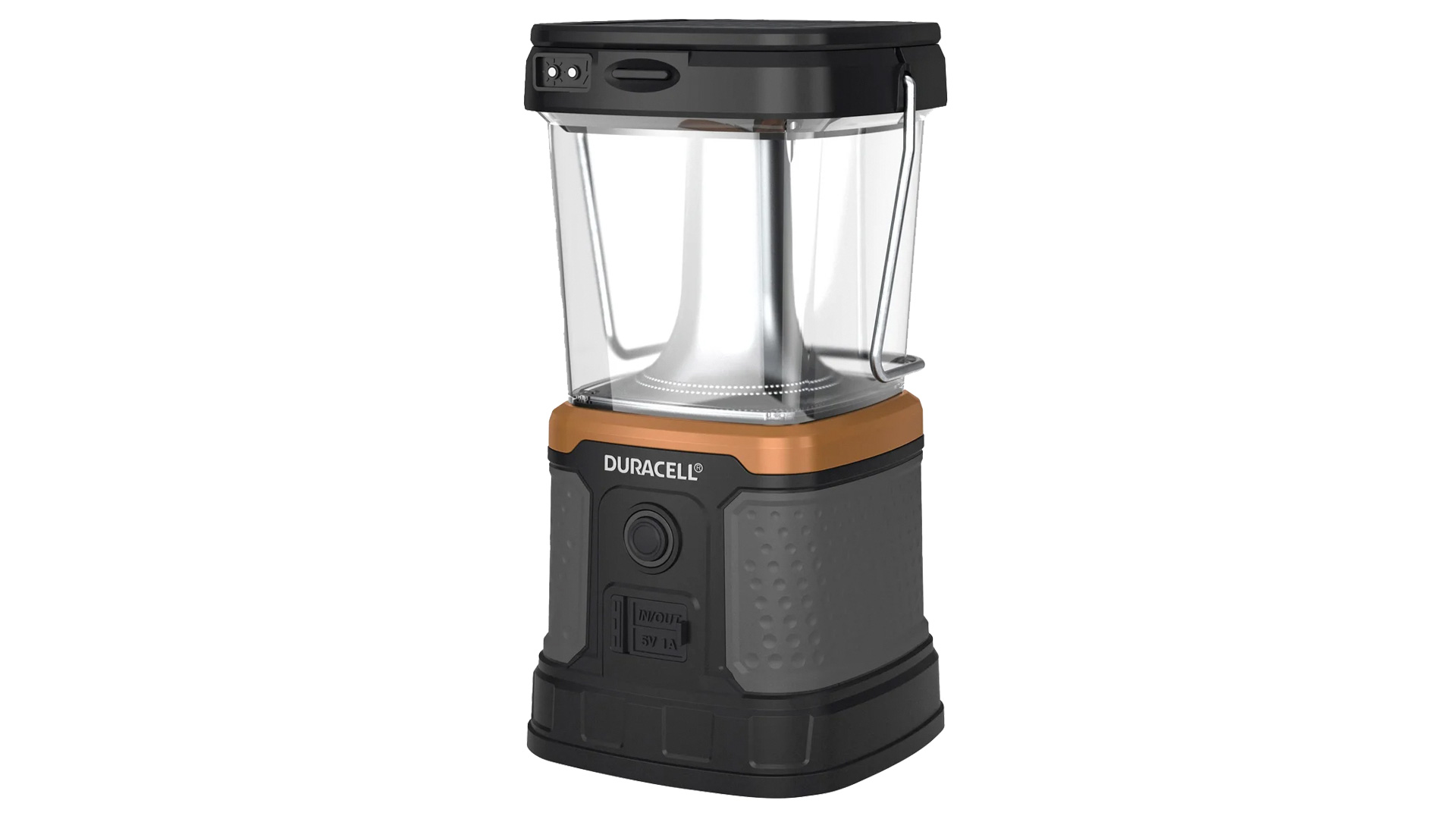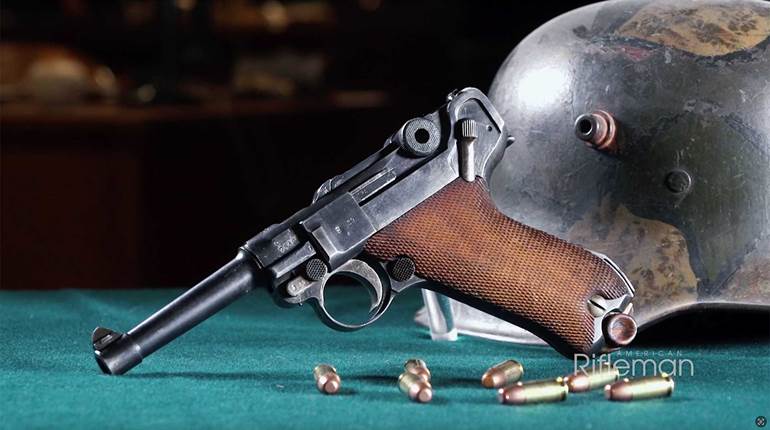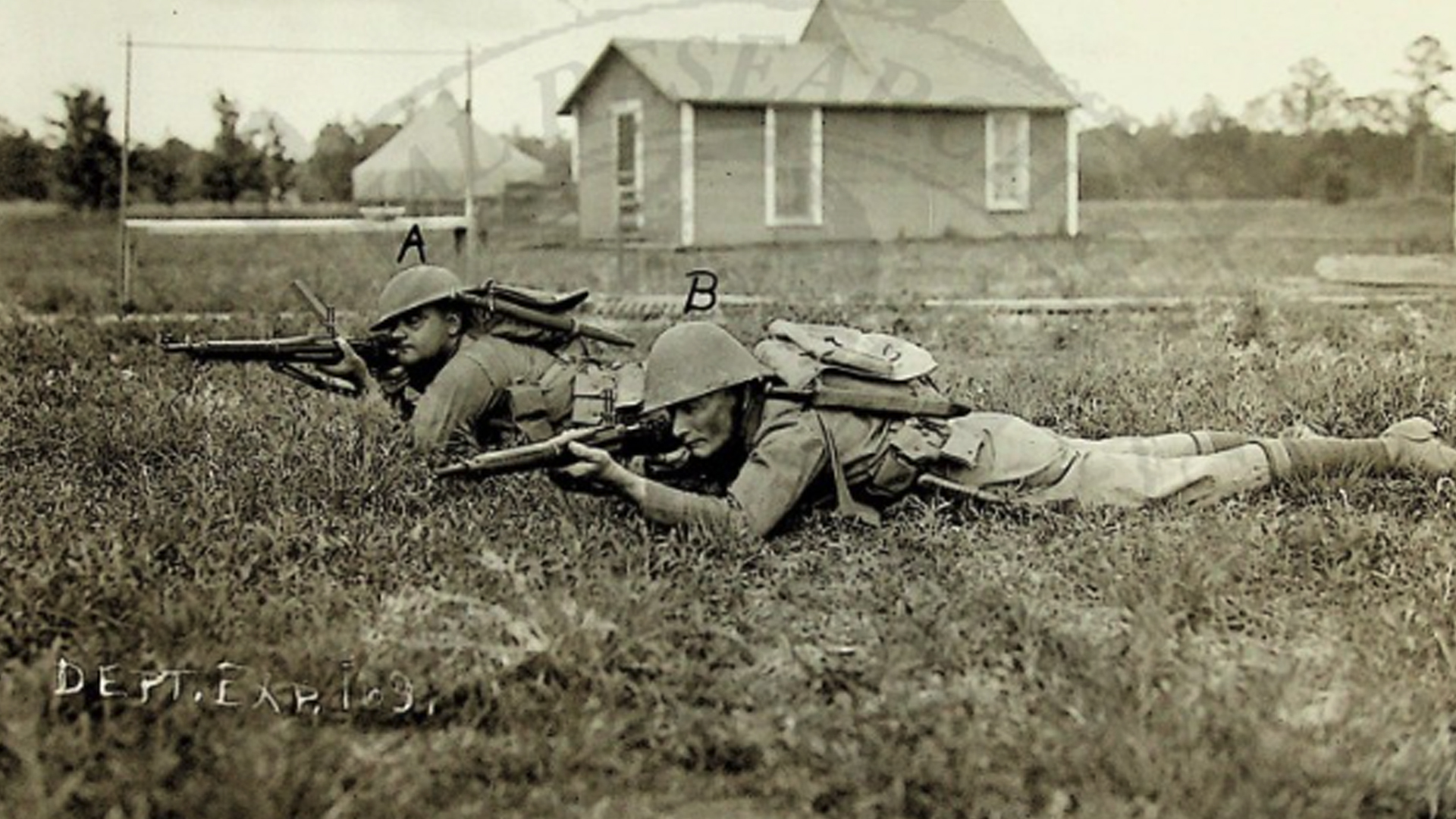
This article, "The Post-War Pedersen Device: Infantry Testing & Ultimate Fate" is part two of a two-part series exploring the history and service of this unique technology. You can read part one, "The Pedersen Device: Its Design, Production & Post-War Issuance," at this link.
Following World War I, with the Pedersen Devices languishing in storage and the short-on-funds inter-war military hoping to find a use for the novel rapid-firing firearm already in their possession, the Infantry Board at Fort Benning, Ga., decided to put on the definitive test to find the future role of the system. The tests, as so many others in the era, fell to the officers and men of the Infantry School’s Dept. of Experiment.
The Department's primary goal was to find out how firearms and equipment fared in the hands of average soldiers under realistic conditions. It was one thing if something worked under laboratory, ordnance depot or range conditions, but what really counts is if it works in the field. The outcome of tests from the Dept. of Experiment could then be used to inform the infantry branch leadership and pass along suggestions to the Ordnance Dept. and decision makers in Washington. Eventually testing a vast range of equipment, including pistol grip stocks, receiver-mounted aperture sights and shortened bayonets (as covered in a previous article), the Dept. was perfectly positioned in the 1920s to tackle the problem of what to do with the Pedersen Device.
The question asked of the Dept. was straightforward: does the Pedersen Device have “sufficient merit to warrant its adoption as part of Infantry Equipment[?]” The test would be broken into two sections and conducted by two separate groups of men. The first part of the test, covering some old ground, was executed by two company-grade infantry officers “assisted by the enlisted men of the Experimental Range detail” who were responsible for testing the following after familiarizing themselves with the mechanism and use of the device:
- Manipulation and Use
- Accuracy
- Angles of Departure
- Time of Flight
- Penetration against various objects (pine boards, armor, helmets, pack)
- Endurance
 The most obvious modification to the M1903 Mark I rifles was the oval ejection port cut into the left side of the receiver, opposite the Pedersen magazine. Photo courtesy of ArchivalResearchGroup.com.
The most obvious modification to the M1903 Mark I rifles was the oval ejection port cut into the left side of the receiver, opposite the Pedersen magazine. Photo courtesy of ArchivalResearchGroup.com.
A tactical test was to be done by men of the Demonstration Platoon of the 29th Infantry Regiment, which served as the support and demonstration unit for the Fort Benning Infantry School. They would put the device to tactical tests in a dynamic field environment, performing assault and defense scenarios while armed with M1903 Mark I rifles and Pedersen Devices. Quite apart from the dry science of ballistics and mechanical soundness, these professional infantrymen were charged with determining how the device would perform in combat. When the results of both tests were viewed together, they would, in theory, allow for a well-rounded opinion of the device and identify strengths and weaknesses.
The Range Tests
While not indicative of how a firearm would actually fare in the field under realistic conditions, the tests by the range detail sought to establish the baseline characteristics of the firearm system in a reasonably scientific manner.
Manipulation & Use
Here, the men of the range detail thoroughly familiarized themselves with the device and its manual of arms. They attached, detached, adjusted, disassembled and assembled the device until proficient. Despite the bevy of small parts, the range detail reported that “The firearm is not complicated and, to a person familiar with various weapons, offers no trouble …” although they identified some difficulty in reassembly caused by the sear and disconnector. They noted that a trained solder could completely disassemble the device in two minutes and thirty seconds and reassemble the piece in five minutes. While the document reports this as a success, it seemingly would preclude any meaningful adjustment or correction of the device during combat.
 Side view of two soldiers equipped for field duty with M1903 Mark I rifles and Pedersen Devices. Photo courtesy of ArchivalResearchGroup.com.
Side view of two soldiers equipped for field duty with M1903 Mark I rifles and Pedersen Devices. Photo courtesy of ArchivalResearchGroup.com.
For the actual use of the device, they were less positive and identified issues with inserting and removing the device, inserting the magazines and cocking the device in certain circumstances. More troubling were safety concerns, including the possibility of loaded and cocked devices being removed from rifles and devices and rifles becoming inoperative “due to faulty end adjustment or derangement of the firing mechanism.”
Accuracy
After learning how to operate the device, the first group of testers tackled its mechanical accuracy. They did this by utilizing “a Mann V-rest, a heavy type barrel with a Mark I receiver, a caliber .30 Model 1918 pistol and a moveable screen.” By using the heavy cast iron rest, itself mounted to a Frankford rest and then mounted upon a concrete base, along with the heavy barrel rifle modified for use with the rest, the test isolated the accuracy potential of the Pedersen Device and its ammo while eliminating most other variables. When used with the ammunition produced by Frankford Arsenal, the device placed all projectiles on target up to 450 yards (groups ranging in size from 2.44” to 44.2”). Accuracy fell away after that, although at 600 yards, six of 10 shots were recorded on the target.
Accuracy was notably worse with ammunition produced by Remington. While it remained effective through 300 yards, wild shots began appearing, eventually necessitating the substitution of a 12'. square target. When the mounted heavy barrel target rifle was substituted for a standard Mark I service rifle, “the results practically coincided with those of the heavy barrel,” and it was “thought that the disturbance … of the cartridge was so slight that there were almost no barrel vibrations.”
Angle of Departure & Flight Time
The testing regarding the angle of departure and time of flight is instructive, as it shows how different the standard ball and Pedersen cartridges are and how significant training would need to be conducted to ensure soldiers knew how to use both and switch between them properly when ordered. For instance, for a target at 400 yards, the sights would need to be set between 1,100 and 1,225 yards to properly account for the Pedersen projectiles drop in flight. Furthermore, while the 2,700 f.p.s. service cartridge would cover that distance in 0.69 of a second, the 1,300 f.p.s. Remington Pedersen ammunition required nearly double the time to reach the same target. During an attack, this would require soldiers to constantly adjust their sights while on the move and under fire to ensure they were not firing well over the heads of their foes.
Penetration
While certainly not wholly analogous to a human target, the penetration tests showed that the Pedersen ammunition would penetrate eight pine boards of medium hardness at 50 yards while still penetrating two boards out to 600 yards. It even penetrated steel helmets at 100 yards and under, showing that despite its light weight and relatively slow speed compared to rifle rounds, it did retain a reasonable degree of speed and power.
Endurance
No military firearms test, now or then, would be complete without an endurance test in which the firearm is subjected to extreme firing conditions well outside the expected norm. For this test, two fresh rifles and Pedersen Devices were selected and subjected to a course of fire totaling 7,500 rounds each. The first was fired at a steady rate of 42 rounds a minute, while the second was fired in five-minute bursts of 500 rounds before being allowed to cool for seven minutes.
 Featuring many small and complicated parts, the Pedersen Device was fairly expensive to manufacture and often did not readily interchange between rifles. Photo courtesy of ArchivalResearchGroup.com.
Featuring many small and complicated parts, the Pedersen Device was fairly expensive to manufacture and often did not readily interchange between rifles. Photo courtesy of ArchivalResearchGroup.com.
The testers first noted that “functioning was perfect to about 5,000 rounds when caked powder residue began to slow up the action of both pistols and cause a few malfunctions.” They then simply placed a few drops of oil on the mounted pistols, which remedied the problem for the remainder of the test. Additionally, while the barrels both became hot enough “to cause a drop of water to sizzle,” they never became overly hot, and no “appreciable diminution of accuracy” was observed.
When the devices were dismounted from the rifles, it was observed that both were thickly crusted with powder fouling and that “the [chamber insert barrels of the Pedersen Devices] had become badly eroded, and the muzzle ends partially shot away.” However, no other adverse effects were observed on the rest of the devices. The rifles mounting the Pedersen Devices only had light copper fouling that was easily cleaned, and “star gauging failed to show but an exceedingly small amount of wear,” although there was some gas cutting present in the portion of the rifle chamber where the Pedersen Devices’ barrels ended.
The Tactical Test
Paired with the objective scientific results of the range detail’s tests, the tactical test would be a more subjective evaluation of how the Pedersen Device would fare in the hands of infantrymen engaged in simulated combat. The men of the demonstration platoon would be placed on both the offense and defense, conducting these field problems on a range especially suited for measuring the effectiveness of the firearm system under various conditions. By evaluating the totality of the impact on targets, shock effect, and behavior of the men, the officers could assess in what roles the Pedersen was most effective—and where it fell short.
The Assault Problem
The platoon was tasked with attacking an enemy position 600 yards away. It consisted of kneeling and prone target silhouettes positioned above a pit manned by range personnel changing the targets and counting hits. Three squads made a frontal assault, with the last “taking advantage of cover, moved into position for a partial enfilade fire on the enemy’s left flank” and opened fire when the other attacking platoons closed to 300 yards.
 A 1920s NCO from the Department of Experiment at Fort Benning demonstrates the proper wear of the Pedersen Device equipment, alongside a standard battle load of equipment and ammunition. The two cloth bandoleers contain a total of 120 rounds of .30-'06 Sprg. on stripper clips, while his cartridge belt would hold 100. On his right hip, and obviously weighing down the belt, is the web magazine pouch holding five Pedersen magazines, with a total of 200 rounds of .30-cal. pistol ammunition. On his left hip is both the web bolt pouch and the Pedersen Device in its scabbard. Interestingly he is also sporting a "Liberty Bell" experimental helmet, and appears to be using a M1910 wire cutter pouch in lieu of the purpose built bolt pouch. Photo courtesy of ArchivalResearchGroup.com.
A 1920s NCO from the Department of Experiment at Fort Benning demonstrates the proper wear of the Pedersen Device equipment, alongside a standard battle load of equipment and ammunition. The two cloth bandoleers contain a total of 120 rounds of .30-'06 Sprg. on stripper clips, while his cartridge belt would hold 100. On his right hip, and obviously weighing down the belt, is the web magazine pouch holding five Pedersen magazines, with a total of 200 rounds of .30-cal. pistol ammunition. On his left hip is both the web bolt pouch and the Pedersen Device in its scabbard. Interestingly he is also sporting a "Liberty Bell" experimental helmet, and appears to be using a M1910 wire cutter pouch in lieu of the purpose built bolt pouch. Photo courtesy of ArchivalResearchGroup.com.
The main attackers started their attack with standard rifle bolts inserted, “quickly obtained fire superiority and advanced by squad rushes.” At 300 yards, while the enfilading squad opened fire, the men were ordered to insert their Pedersen Devices before continuing to close. While this did cause them to lose fire superiority for a time, “[I]t was regained immediately after all pistols were functioning and the pit detail had difficulty in recording the hits as there were an exceedingly large number.” The testers chalked the temporary loss of fire superiority up to the difficulty associated with inserting the magazine and chambering the first round; something found to be extremely difficult “when a man’s hand was sweaty and oily” as it might be under combat conditions.
Concerning the rounds placed on the silhouette targets, between the ranges of 600 and 300, the range personnel counted 1,076 hits—which is undoubtedly respectable over open sights and while maneuvering via heart-rate-elevating rushes. By contrast, during the final stage of the assault (between 300 and 0), there were 2,279 hits recorded by the .30-cal. pistol ammunition. Put another way, when averaged over the nine minutes the assault problem took to complete, there were 269 hits per minute while the standard rifle ammunition was being used and 456 hits per minute with the pistol ammunition.
Not all was rosy with the results, however. The testers noted, “Considerable delay was experienced in the assault after inserting the pistols by having to help men attach magazines [and] clear malfunctions …” When the same assault problem was executed by men armed only with standard service rifle ammunition, they completed it three minutes faster (although with a lower 165 average hits per minute).
 Two of the complaints about the .30-cal. pistol ammunition were the low velocity and resulting high trajectory of the projectile at range. This difference in sighting between Pedersen and standard service ammunition would require significant extra training to ensure soldiers remained on target during the heat of battle. Photo courtesy of ArchivalResearchGroup.com.
Two of the complaints about the .30-cal. pistol ammunition were the low velocity and resulting high trajectory of the projectile at range. This difference in sighting between Pedersen and standard service ammunition would require significant extra training to ensure soldiers remained on target during the heat of battle. Photo courtesy of ArchivalResearchGroup.com.
Another problem besides maintaining the momentum of the attack arose: the problem of losing the rifle bolt. For “even in a demonstration, where there [was] no excitement and fear as in battle, 19 percent either failed completely to place the bolt [in the designated pouch] or did not fasten the flap so that the bolt was lost in the advance.” Supposing that the loss ratio would be even higher in actual combat scenarios, this was determined to be a significant problem as the soldiers would thereby lose “the power to use their rifles with the service ammunition until new bolts were supplied.”
The Defense Problem
The defense problem pitted the demonstration platoon against an implacably advancing foe consisting of “thirty-seven kneeling silhouette figures which were exposed at 300, 250, 200, 150, 100 and 50 yards respectively for thirty seconds at each range.” The exercise was completed twice: once with the platoon outfitted with Pedersen Devices and once with the usual period loadout. While armed with the Pedersen Device, each man in the platoon had 200 rounds of ammunition in five magazines. When the platoon was armed normally, it had seven standard riflemen and one automatic rifleman per squad. When armed with the Pedersen Device, the platoon scored almost three times as many hits (1,206 pistol hits vs. 464 with rifle ammunition), the difference being the most pronounced at the shorter ranges. However, they expended much more ammunition (5,800 pistol rounds vs. 1,600 .30-’06 Sprg. rounds) and had an overall worse accuracy (20.4 percent vs. 29 percent) despite the increased overall number of hits, which would create additional logistics requirements beyond just supplying another type of ammunition. While the U.S. Army of the 1920s was slowly in the process of widespread motorization, it was still greatly reliant on literal horsepower—like most other nations—to move its heaviest supplies away from ports and railways and into battle. And while troops are indeed easier to resupply when in established defensive positions, the American view of combat tended to shy away from static defense. Even after the experience of World War I, American military planners essentially intended defensive operations to be simply a short transition point between further offensive operations. This “take, hold and attack again” mindset meant that defensively positioned troops would be further away from established supply centers and needed to be resupplied as quickly and efficiently as possible to not lose forward momentum.
Comparison Against Other Arms
To determine if the Pedersen Device brought any new capabilities not achievable with other production firearms, the Dept. of Experiment compared it to other firearms available to them, including the Winchester riot shotgun, Browning Automatic Rifle, a presumably commercial manufacture Remington self-loading rifle of .25 caliber and an early Thompson submachine gun. They found that each of these firearms outclassed the Pedersen Device either at range, striking power or quickness.
The Thompson was noted to “approach the Pedersen Device more closely than any of the other weapons and seems superior to it, including shock action and killing power of the bullet. The .45 caliber bullet being far superior to the light .30 caliber one.” The other close-range firearm, the riot shotgun, “could not compete with the Pistol at ranges beyond 200 yards but at the shorter ones proved it was a better firearm for quick work in brush or the dark, in other words at unseen targets or when aimed shots are not necessary.” However, they also noted, “The Test Sergeants, all men who have seen jungle fighting during the Philippino [sic] Insurrection, were unanimous in their preference to the shot gun over the Model ’18 pistol for close fighting.”
The Findings
To summarize the 27-page report (plus appendix and additional pages, bringing it to 99 pages), the acting director of the Dept. of Experiment listed the advantages and disadvantages of the Pedersen Device. While quantity alone is not always a determining factor, 12 advantages were identified alongside a whopping 25 disadvantages.
Advantages included the negligible recoil and heat generation, a simple operation and mechanism, and that it “increases fire power in assault or defence at close quarters.” They also noted it “[p]rovides a firearm of opportunity for special situations in connection with the service rifle” and that it is an [e]fficient weapon for riot duty”—which was especially true since the standard Guard Cartridge was a significantly downloaded service cartridge designed to minimize overpenetration and danger area (although the .30 pistol cartridge was weaker still).
 The Infantry Board ultimately identified a bevy of disadvantages with the Pedersen Device and did not seek to adopt it branch-wide. Photo courtesy of ArchivalResearchGroup.com.
The Infantry Board ultimately identified a bevy of disadvantages with the Pedersen Device and did not seek to adopt it branch-wide. Photo courtesy of ArchivalResearchGroup.com.
The numerous faults found ran the gamut from ballistics to logistics. The testers were concerned about both the lack of manual safety and the ability of a cocked device to be removed from the rifle with a loaded cartridge in the chamber. Handling the firearm could be difficult, with inserting the device, loading the magazine, inserting the magazine and operating the slide all presenting possible issues, particularly in field conditions. Additionally, the standard rifle bolt or Pedersen Device could easily be lost in the field, rendering half of the firearm’s capability useless. Regarding ballistics, the testing found that accuracy and danger spaces decreased significantly at longer ranges, shock effect and penetration were poor and a rear sight marked only for the standard service ammunition would require soldiers to remember the sight settings for the pistol ammunition.
Drawing directly from these findings, the captain in charge of the testing team from the Dept. of Experiment recommended that “The Caliber .30 Model 1918 Pistol be not adopted by the Infantry.” The overall Infantry Board, headed by Brig. Gen. Paul B. Malone, reached a slightly more nuanced decision. While they agreed that the disadvantages were too great for troops on the offense, existing Pedersen Devices could be useful for “troops whose mission in the event of war would be by virtue of location, necessarily that of a passive [defense]. For such troops the ammunition supply would be simplified, ranges would be accurately known, and the probability of receiving untrained replacements at frequent intervals would be slight.” So, while the Infantry Board determined the Pedersen Device was not fit for general issue and no more should be produced, it recommended that infantry located in the Panama Canal, Hawaiian and Philippine departments issued them “within the limits of supply and maintenance.”
The Fate of the "Pistol, Automatic, Caliber .30 M1918"
After failing to find widespread use with the inter-war Army, most Pedersen Devices, magazines, ammunition and accouterments remained locked securely in storage, taking up valuable space in various arsenals. The infantry and cavalry branches had both declined to adopt them for regular military service, and even the field artillery indicated they were not considering them as subcaliber equipment for their cannons. In March 1931, the War Dept. Sub-Committee on Small Arms recommended that:
“[T]he caliber .30 Automatic Pistol, M1918, be declared obsolete and released for disposition. This pistol has never proved satisfactory for service use and is believed it will be impossible to so modify it as to make it satisfactory. There is no apparent reason for retaining this useless weapon and any expense connected with its warehousing, inventory or maintenance is an unwarranted waste of government money.”
They noted that the 59,393 devices held at Rock Island Arsenal would need “immediate reconditioning if serious deterioration is to be prevented” and that the approximately 60 million rounds of ammunition were not compatible with any other firearm (with later reports claiming the ammo had “deteriorated to such an extent as to be unreliable and unsuited for general issue”). If declared obsolete, they proposed to “Offer devices to Navy and Marine Corps. If no use is there found, it is proposed to break up and sell the devices for scrap.” Unfortunately, the USMC, long the recipients of castoff equipment due to perpetually tight budgets, was not to be the savior of the Pedersen Device, whose fate was sealed after it failed to find a place with the sea services.
 With 65,000 devices in storage following World War I, Ordnance Department leadership tried to find a role for the Pedersen Device. Besides the 4,000 sent to Panama, 1,338 were distributed to 21 other Army organizations. Photo courtesy of ArchivalResearchGroup.com.
With 65,000 devices in storage following World War I, Ordnance Department leadership tried to find a role for the Pedersen Device. Besides the 4,000 sent to Panama, 1,338 were distributed to 21 other Army organizations. Photo courtesy of ArchivalResearchGroup.com.
With a total tally of 64,873 devices on hand, valued at $15 per device, the Army was sitting on $973,095 worth of what it considered useless stock. As they only expected the scrap value to be $700, it was a significant financial loss to the government. However, with mounting costs for storing and maintaining them, something had to be done. To that end, the following instruction was sent from the Office of the Chief of Ordnance to the Commanding Officers of Rock Island, Ill., Springfield Armory, Mass, San Antonio Ordnance Depot, Texas, and Benicia Ordnance Depot, Calif.:
May 14, 1931
Subject: Disposition of Pistols, automatic, cal..30, M1918
To: Commanding Officer,
Rock Island Ordnance Depot,
Rock Island, Ill.
-
- The Adjutant General, in file 0.0 474.6/6410, A.G. 474.6 (4-7-31)Misc. (D), under date of April 18, 1931, has declared obsolete and ordered disposal of all Pistols, automatic, cal. .30, M1918 (Pedersen Devices) with their spare parts, tools, accessories, (except the U.S. Rifle, cal. .30, M1903, Mk. I) and parts for accessories.
- It is desired to dispose of this equipment immediately and with as little expense as possible. Therefore, it is suggested that any of the equipment which is packed in boxes be piled in a suitable place and burned. The residue should then be transferred to the scrap pile. Any equipment not packed should be exposed to the elements for a sufficient length of time to make them unfit for further use, after which they may be sold as scrap.
- It is requested that this office be advised as to when this action has been accomplished, along with the quantities of the various items disposed of.
- The Adjutant General, in file 0.0 474.6/6410, A.G. 474.6 (4-7-31)Misc. (D), under date of April 18, 1931, has declared obsolete and ordered disposal of all Pistols, automatic, cal. .30, M1918 (Pedersen Devices) with their spare parts, tools, accessories, (except the U.S. Rifle, cal. .30, M1903, Mk. I) and parts for accessories.
By order of the Chief of Ordnance
//Signed//
W.E. Larned
Major, Ordnance Dept.
Assistant
Showing how little regard for the Pedersen Devices existed in 1931, the only pushback to the order uncovered in the archival records was about wooden crates. A Rock Island officer noted that “In order to save about 8,625 arms chests and packing boxes, valued at approximately $17,250.00, it is proposed to empty and burn the contents on scrap lumber” since “The boxes and chests containing the equipment in question are substantial and are desirable for use as shipping containers. The value of the boxes and chests saved will more than offset the cost of emptying the contents.” This once-revolutionary secret weapon was now significantly less valuable to the military than the boxes in which it was packed.
Only a small handful of the devices and an equally tiny number of the unique accessories, such as the metal scabbard, escaped destruction through a seeming mix of official and unofficial means, making ascertaining the exact number that survived the scrapping impossible. And while the Pedersen Device did not have its confidential status removed until 1931, in an interesting twist, Maj. Gen. Julian Hatcher reported that one was discovered following the fall of Nazi Germany in the reference collection of Rheinische Westfallian Sprengstoff, A.G. Nurnberg—likely something that walked off during the 1919 trials in Europe, or potentially from the Panama Canal Zone, and into the hands of a once and future enemy.
 Besides the receiver, other small parts needed to be modified from the standard M1903, or added entirely, in order to ensure the Pedersen Device fit and functioned. The top receiver, and small parts on the right, are for use in a M1903 Mark I rifle. Photo courtesy of ArchivalResearchGroup.com.
Besides the receiver, other small parts needed to be modified from the standard M1903, or added entirely, in order to ensure the Pedersen Device fit and functioned. The top receiver, and small parts on the right, are for use in a M1903 Mark I rifle. Photo courtesy of ArchivalResearchGroup.com.
One part of the program that was largely salvaged was the Mark I rifles, spare receivers and stocks. While the vast majority of rifles were converted to standard configuration rifles during routine overhauls, they continued to serve until the end of the M1903s’ service life alongside the standard rifles—surely puzzling many of the service members issued the rifles with strange markings and odd oval cuts in the receiver. The stories to explain these differences, undoubtedly concocted by the men who were issued these rifles, were likely quite entertaining!
While the Pedersen Device was ultimately a failure (and his full-power semi-automatic rifle design eventually lost out to the M1 Garand), it certainly does not tarnish the innovation and persistence of its inventor. John Pedersen identified a weakness with the manually operated rifles of the day, developing a novel, if also quite complicated, solution to the lack of volume of fire from the individual rifleman. But for the unexpected early end of the war, he would have put hundreds of thousands of unique rapid-fire high-capacity rifles in the hands of American Doughboys during the planned spring offensive of 1919.
While M1903 Mark I rifles converted back to standard M1903 specifications are relatively easy finds on the collector market, the Pedersen Devices themselves are quite rare and command high prices. Fortunately, you can see one and its associated equipment at the NRA’s excellent National Firearms Museum in Fairfax, Va. And suppose you want to read the primary source documents for the Pedersen program and many other military firearm-related files. In that case, you can check them out at Archival Research Group’s webpage.













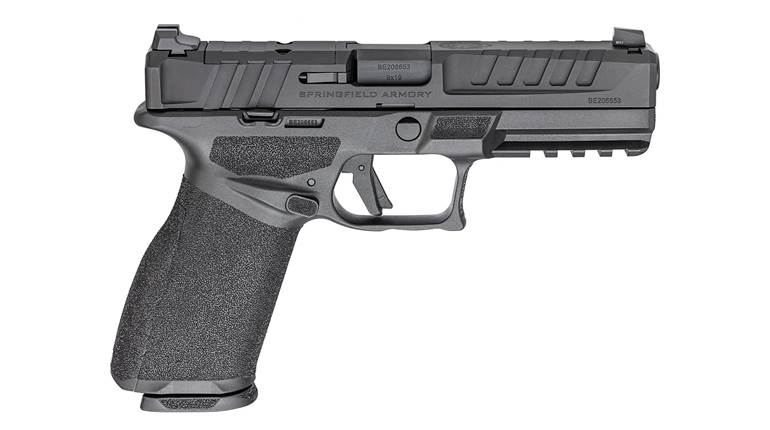

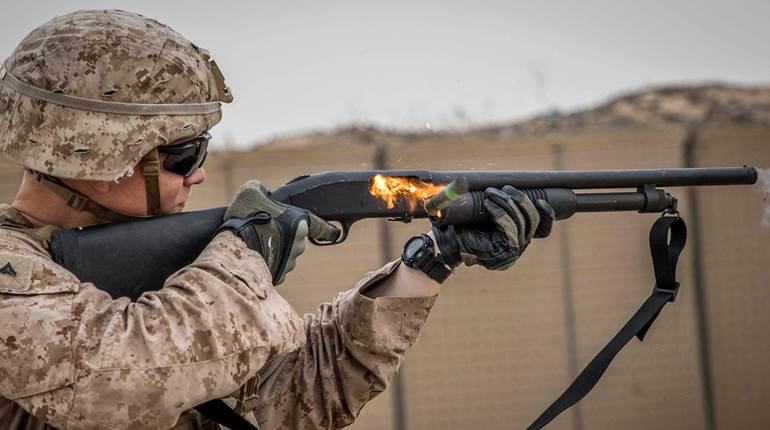
![Auto[47]](/media/121jogez/auto-47.jpg?anchor=center&mode=crop&width=770&height=430&rnd=134090788010670000&quality=60)

